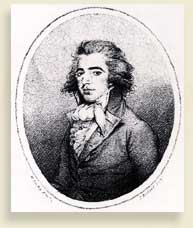Territorial Timeline

The Strait of Juan de Fuca explored by John Meares
On Sunday, June 29, 1788, Captain John Meares sighted an inlet that he named the Strait of Juan de Fuca. Meares was most likely the first European explorer to reach the Strait since Juan de Fuca's claim to have been there in 1592 was never documented. After exploring the strait, Meares determined that it wasn’t the "Northwest Passage" which would link the Atlantic and Pacific oceans.
In 1787 John Meares left India with two ships, the Felice Adventurer and the Iphigenia Nubiana and sailed under the flag of Portugal to avoid obtaining a trading license from the British East India Company. In May 1788, he landed at Nootka where, for two pistols, he bought a parcel of land from Chief Maquinna. At once he and his crew (which included a number of Chinese) built a small fort and began work on a small schooner, the frame of which was brought on the voyage. Leaving some of the men to work on the schooner, Meares sailed south in the Felice Adventurer. Captain William Douglas sailed north in the Iphigenia Nubiana. On Sunday, June 29, 1788, Meares sighted an inlet that he named the Strait of Juan de Fuca. Meares was most likely the first European explorer to reach the Strait since Juan de Fuca's claim to have been there in 1592 was never documented. He crossed to Tatoosh Island and continued south, sighting a snow-covered mountain. Although previously named Santa Rosalia by Juan Perez in 1774, Meares renamed it Mt. Olympus. His journey south took him to Shoalwater Bay and Willapa Harbor while he searched for the great river rumored to be in the area. Failing to find the Columbia River, he named nearby features Cape Disappointment and Deception Bay and finally returned to Nootka.
On returning to Nootka Sound, Meares dispatched one of his officers, Mr. Duffin, with thirteen men in a longboat to explore the Strait of Juan de Fuca. Captain Douglas in the Iphigenia Nubiana arrived soon afterwards, having explored portions of the coast of Alaska and the waterways north of the Queen Charlotte Islands. During all of these explorations, the men in the ships and those left at Nootka were actively trading with the Indians for furs. Meares sent the Iphigenia Nubiana and the North West America, the little schooner that his men built, to the Sandwich (Hawaiian) Islands. Meanwhile Meares sailed in the Felice Adventurer to China with a full load of furs, the first instance of international trade in Washington.